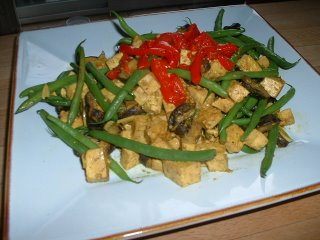Come to umami (shiitakes again)

I probably wouldn’t be such a wild mushroom fanatic if it wasn’t for my good friend called Anna Morel. A biologist by training, she became interested in mushrooms a couple of decades ago and has been an avid forager ever since. At (somewhat) regular intervals, my fridge is replenished with freshly-plucked chanterelles, boletes, maitake, morels, and other delicious and health-enhancing forest fungi.
Many wild mushrooms have healing powers, but lots of people I know never eat them. Perhaps the fact that some species can kill you scares them off. They prefer to stick with those pale but exceedingly safe supermarket buttons, which are not without merit but can’t hold a candle to their intensely flavored country cousins.
Even if you don’t have a mushroom expert in your life, you can enjoy the exotic flavor and immune-boosting qualities of fungi by eating shiitake mushrooms often. The shiitakes we find in urban markets these days are domesticated specimens, not picked in the wild, but they’re potent nonetheless. If you’re a do-it-yourselfer, by all means buy a shiitake-inoculated log sometime and grow your own. It’s a very cool science project if you have kids in the house.
The photo is of one of many Asian style sautes I've made recently. Simple, delicious, and beautiful to look at. Shiitakes, tofu, green beans, ginger, garlic -- and those are strips of roasted red pepper on top.
BTW,there's actually a good scientific basis for the wonderfully satisfying taste of shiitakes. They naturally contain two nutritive compounds, called glutamate and guanylate, that provide an intense umami flavor.
That is not a typo. Umami is the fifth taste, dontcha know. Our tongues are not restricted to tasting sweet, sour, salty, and bitter – as was believed for hundreds of years. We can also distinctly detect when a food is deeply savory, and that taste was named “umami” by one of the Japanese scientists who made this discovery.
Other umami foods include Parmesan cheese, tomatoes, certain shellfish, green tea, sweet potatoes, and soy. Monosodium glutamate is an umami-enhancing condiment, but because of its high concentration of the glutamate, many health experts consider it harmful.
Live long and prosper. Eat your (wild) mushrooms!
vegetarian food cooking umami shiitake mushrooms

0 Comments:
Post a Comment
<< Home